Today, we're diving deep into the world of Goodyear welted shoes to determine if their famed quality is merely a myth or truly magical. Join us as we explore the history, construction, and alternatives to Goodyear welting and uncover what makes these shoes a staple in quality footwear.
Table of Contents
- 👞 Introduction
- 📜 History (Charles Goodyear, Jr.)
- 🔍 What is Goodyear Welting?
- ✨ What's The Hype?
- 👍 Just how GOOD are Goodyear Welted Shoes?
- 🔎 Assessing the Overall Quality
- 👜 1. The Upper Leather
- 👣 2. The Sole and Heel
- 🎨 3. The General Finish
- 🔄 What Alternatives Are There?
- 🛠️ 5. Cemented (Glued) Construction
- 🧑🤝🧑 Whom is Goodyear Welting For?
- 🚫 Whom is Goodyear Welting NOT For?
- 🔮 Myth or Magic?
- 👔 Outfit Rundown
👞 Introduction
Welcome to the fascinating world of Goodyear welted shoes! In this exploration, we delve into the intricacies of this shoemaking technique that has captivated footwear enthusiasts for generations. From its historical roots to its modern-day significance, understanding Goodyear welting is essential for anyone looking to invest in quality footwear.
But what exactly makes these shoes stand out? Is it just the technique, or is there something deeper at play? Let's embark on a journey to uncover the history, craftsmanship, and the undeniable allure of Goodyear welted shoes.
📜 History (Charles Goodyear, Jr.)
The story of Goodyear welting begins with Charles Goodyear Jr., a name synonymous with innovation in the shoe industry. Born into a family of inventors, Charles Jr. took inspiration from his father's work in vulcanized rubber and applied it to shoemaking.
In 1871, he patented a machine that revolutionized how shoes were made, drastically reducing the time it took to attach the sole to the upper. This breakthrough allowed for greater efficiency without sacrificing quality, a hallmark of Goodyear's legacy.
Prior to this, shoemakers relied heavily on hand welting, which, while offering meticulous craftsmanship, limited production capabilities. Charles Jr.'s method paved the way for mass production while maintaining the integrity of quality that customers sought.
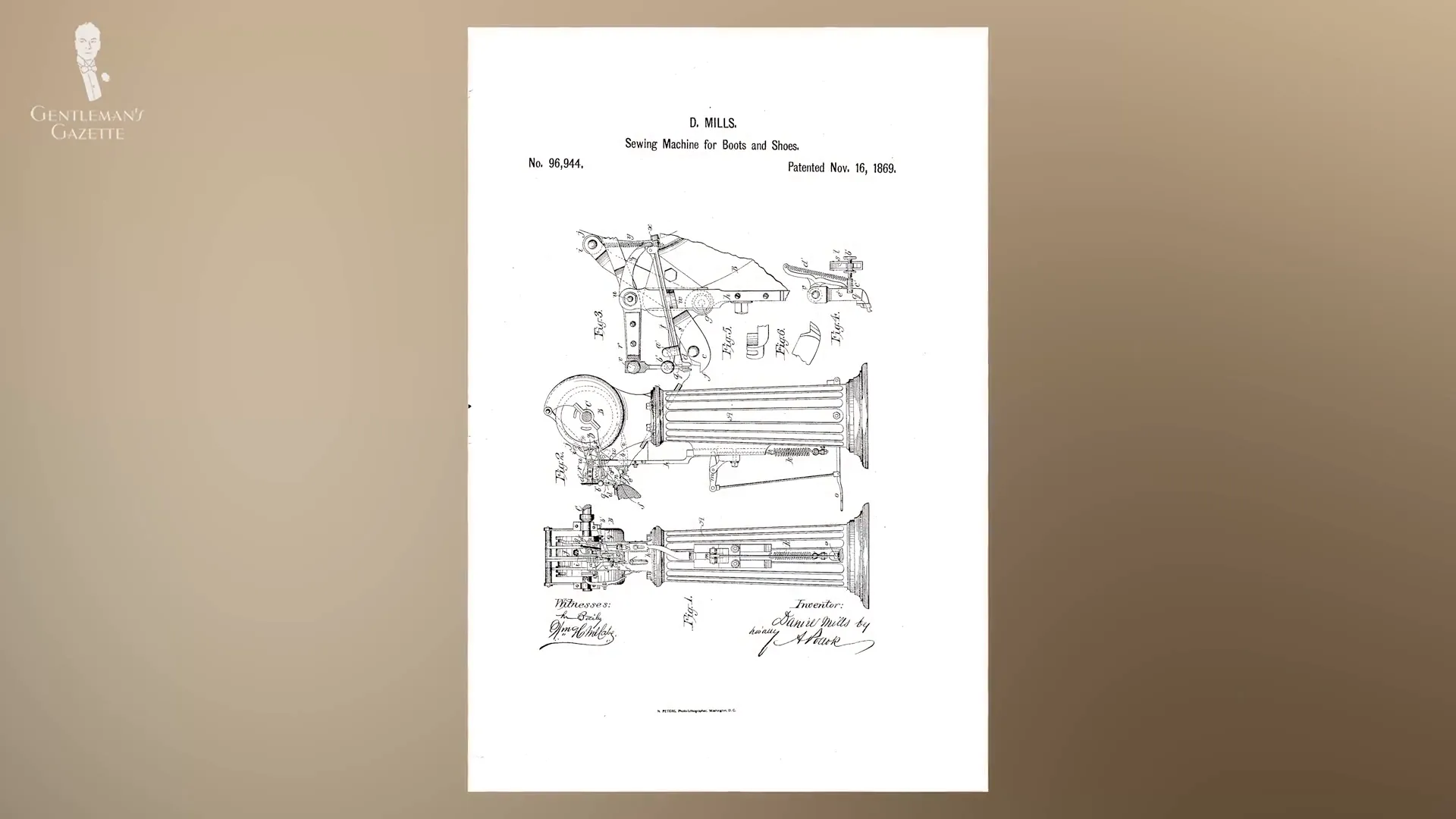
🔍 What is Goodyear Welting?
At its core, Goodyear welting is a construction method that involves stitching a leather strip, known as the welt, to both the upper part of the shoe and the sole. This creates a strong bond and a unique structure that sets Goodyear welted shoes apart from others.
The process begins with the upper being sewn to the welt. Next, the sole is attached to the welt, resulting in two distinct stitches that enhance durability and water resistance. This separation allows for easy resoling, making Goodyear welted shoes a sustainable choice for footwear enthusiasts.

✨ What's The Hype?
Why is there so much buzz surrounding Goodyear welted shoes? The answer lies in their reputation for quality and longevity. As consumers become more discerning, the demand for durable, well-crafted footwear has surged.
However, the term "Goodyear welted" has been used extensively in marketing, sometimes leading to misconceptions about the quality of shoes bearing the label. It's essential to understand that while the construction method is significant, it's not the sole determinant of a shoe's overall quality.
To truly appreciate Goodyear welted shoes, one must look beyond the hype and examine the craftsmanship, materials, and design that contribute to their appeal.
👍 Just how GOOD are Goodyear Welted Shoes?
When assessing the quality of Goodyear welted shoes, it's crucial to consider various components. The welt is just one part of a complex system that includes the upper leather, the lining, and the sole, among others.
Each component plays a vital role in the shoe's overall performance and comfort. While the Goodyear welt provides durability, the type of leather, stitching quality, and finishing touches can significantly impact the wear experience.
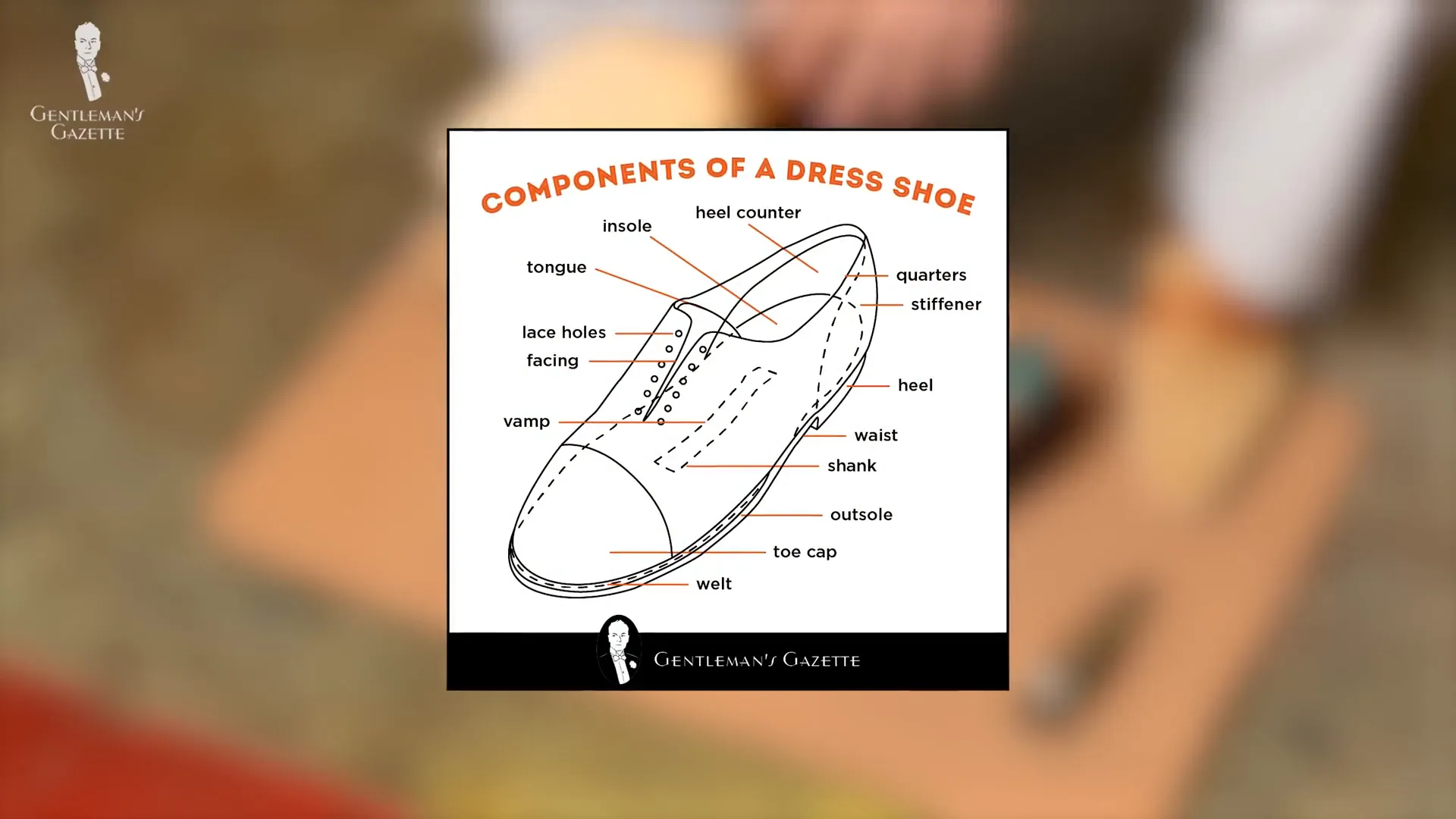
🔎 Assessing the Overall Quality
To determine the quality of Goodyear welted shoes, take a holistic approach. Look at the materials used, the craftsmanship involved, and the attention to detail throughout the construction process.
Key areas to focus on include:
- The Upper Leather: Investigate the type of leather and its quality. Is it consistent, free from blemishes, and well-finished?
- The Stitching: Check for even, tight stitches that indicate expert craftsmanship.
- The Sole and Heel: Examine the materials used for the sole and heel, ensuring they complement the overall design.
👜 1. The Upper Leather
The upper leather is arguably the most visible part of a shoe and significantly influences its aesthetic appeal and performance. Understanding the types of leather used is essential for making an informed purchase.
Common choices include calf leather, known for its softness and durability, and exotic leathers like Cordovan or crocodile, which offer unique textures and finishes. Each type of leather has its characteristics, affecting both the look and feel of the shoe.
Additionally, it's crucial to inspect the leather for uniformity. Are there any noticeable blemishes or inconsistencies? While minor imperfections may be acceptable, significant flaws could indicate a lack of quality control.
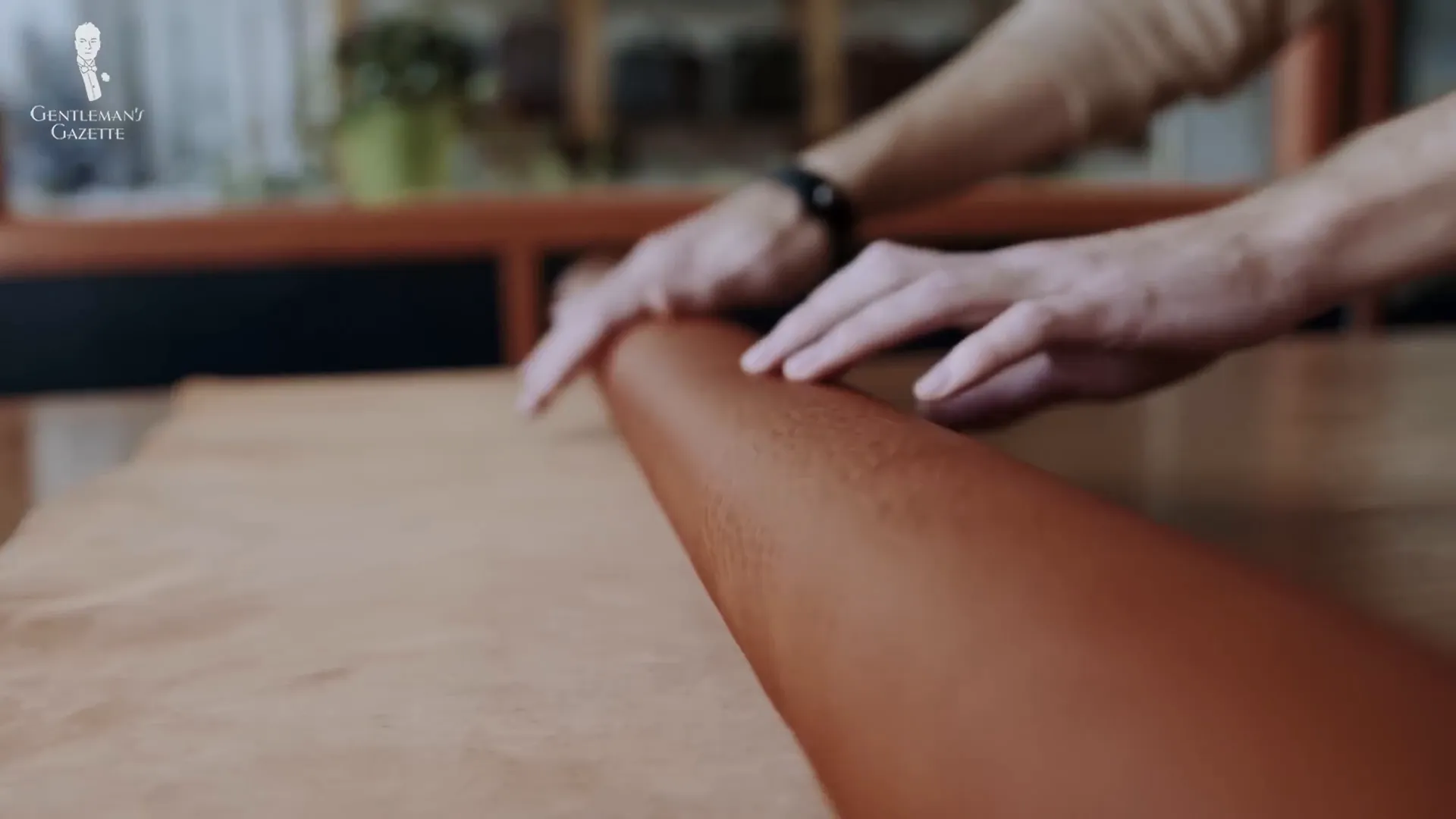
👣 2. The Sole and Heel
The sole and heel of a shoe play a crucial role in its overall functionality and aesthetics. These components not only affect the shoe's comfort but also its durability and style. Understanding the materials and construction methods used for the sole and heel can help you make a more informed choice when selecting your footwear.
Traditionally, leather has been the go-to material for soles and heels, offering a classic look and feel. However, modern shoemakers are increasingly turning to alternative materials that provide enhanced performance. Rubber soles, for instance, are gaining popularity for their superior traction and water resistance.
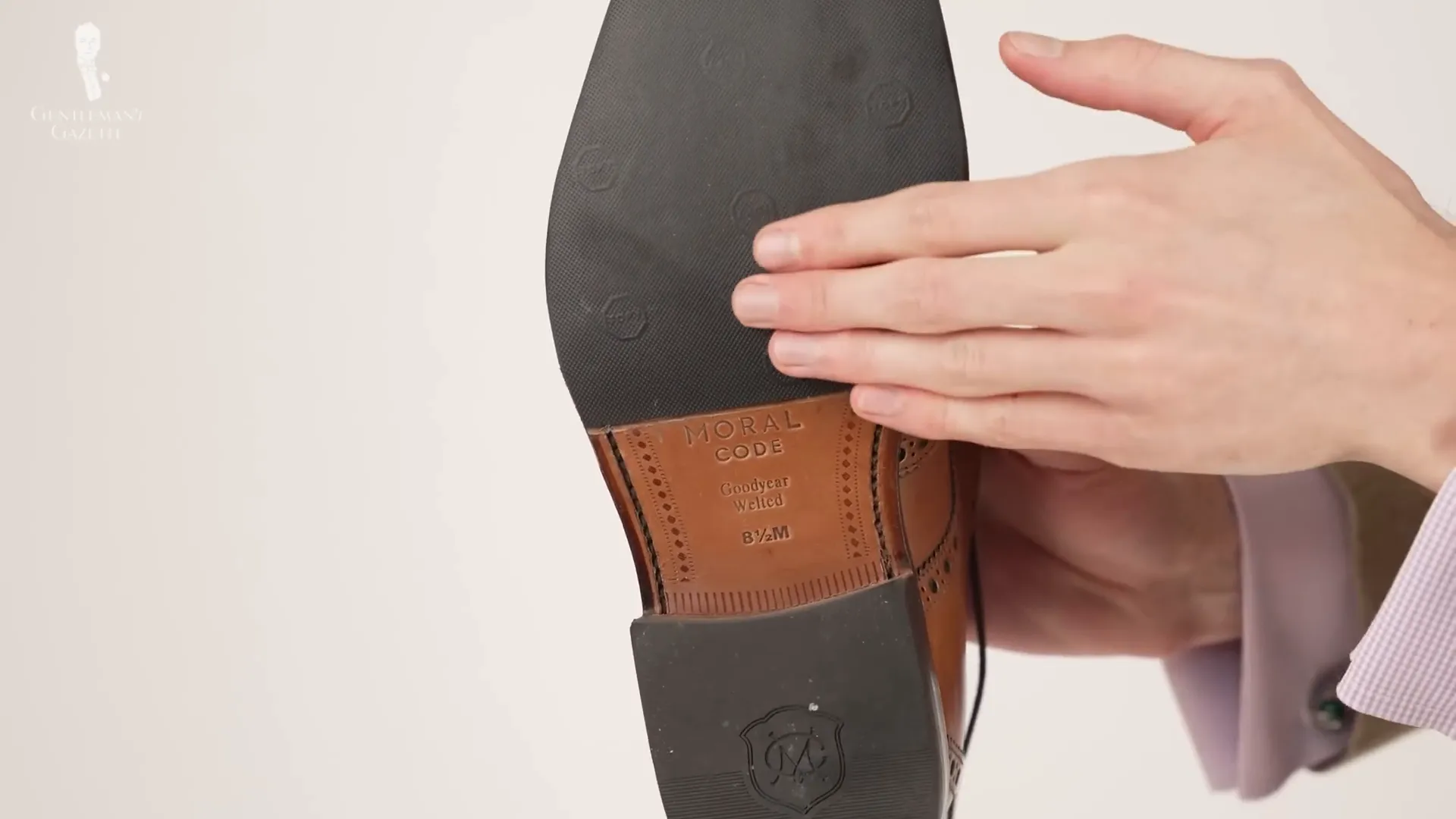
Types of Soles
- Leather Soles: Known for their elegance, leather soles offer a timeless appeal and are often used in formal shoes. They do, however, require proper care to maintain their quality.
- Rubber Soles: These provide excellent grip and durability, making them suitable for various weather conditions. Brands like Crockett and Jones have even developed sleek rubber soles that maintain a refined look.
- Vibram Soles: Popular for their ruggedness, Vibram soles are ideal for outdoor footwear, providing exceptional traction and durability.
🎨 3. The General Finish
The finish of a shoe can significantly influence its appearance and longevity. A well-finished shoe not only looks appealing but also indicates the quality of craftsmanship that went into its production. Pay attention to the details, as they often reveal the overall quality of the shoe.
Common finishing techniques include polishing, burnishing, and edge finishing. Each method serves to enhance the shoe's visual appeal while protecting the leather from wear and tear.
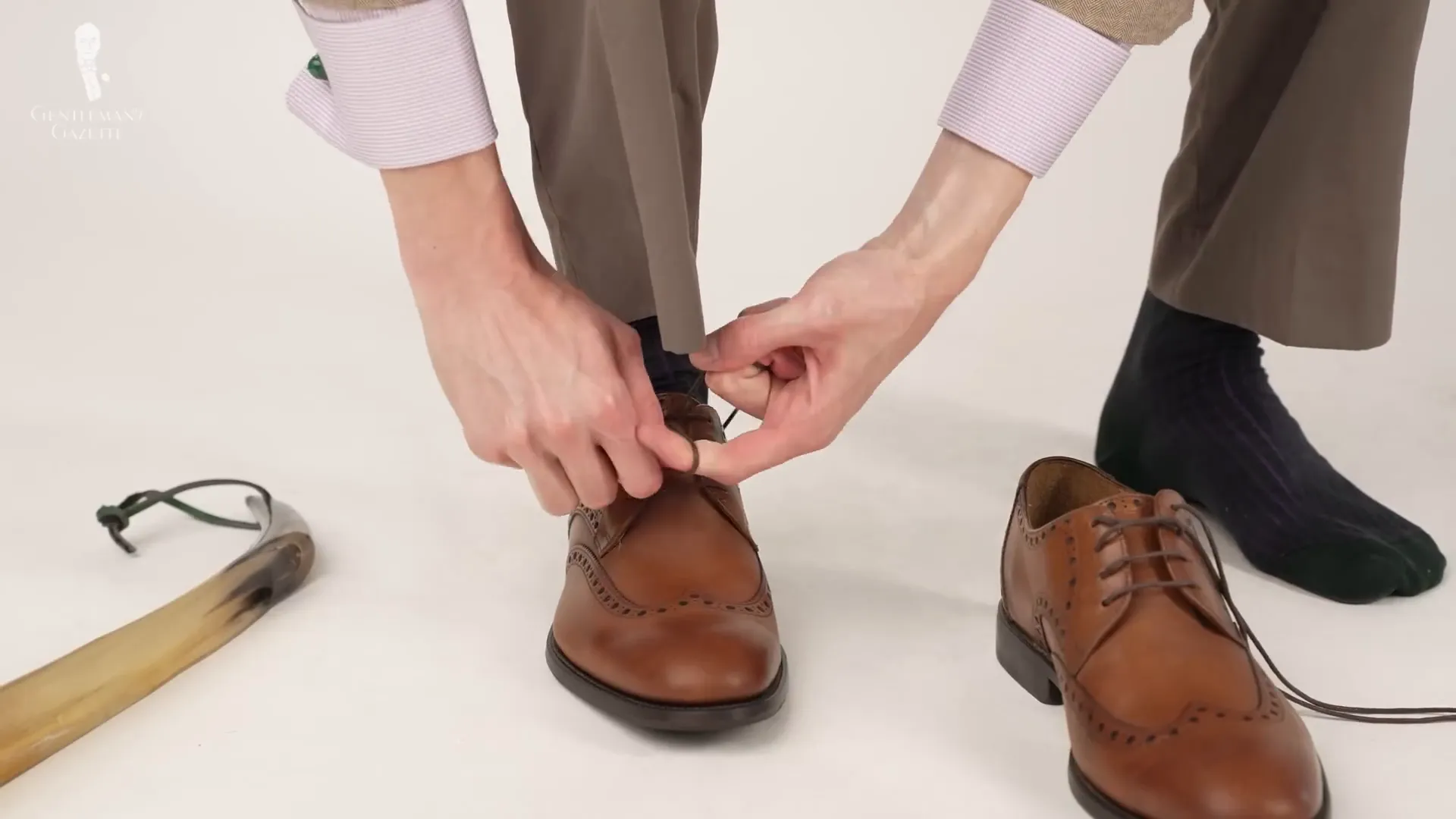
Key Finishing Techniques
- Polishing: This process adds a protective layer to the leather, enhancing its shine and preventing moisture damage.
- Burnishing: Often used on the edges of the shoe, burnishing creates a smoother finish, making the shoe more visually appealing.
- Edge Finishing: This technique seals the edges of the leather, protecting it from moisture and wear, while also providing a clean look.
🔄 What Alternatives Are There?
While Goodyear welting is celebrated for its craftsmanship, it's essential to recognize that other construction methods also produce quality footwear. Each technique offers unique benefits that cater to different preferences and needs.
Exploring these alternatives can provide you with a broader understanding of shoe construction and help you find the perfect fit for your lifestyle.
1. Blake Stitch
The Blake Stitch method involves directly stitching the upper to the sole, eliminating the need for a welt. This results in a lighter, more flexible shoe that can be more comfortable right out of the box. The streamlined design is often favored in Italian shoemaking, perfect for styles like opera pumps.
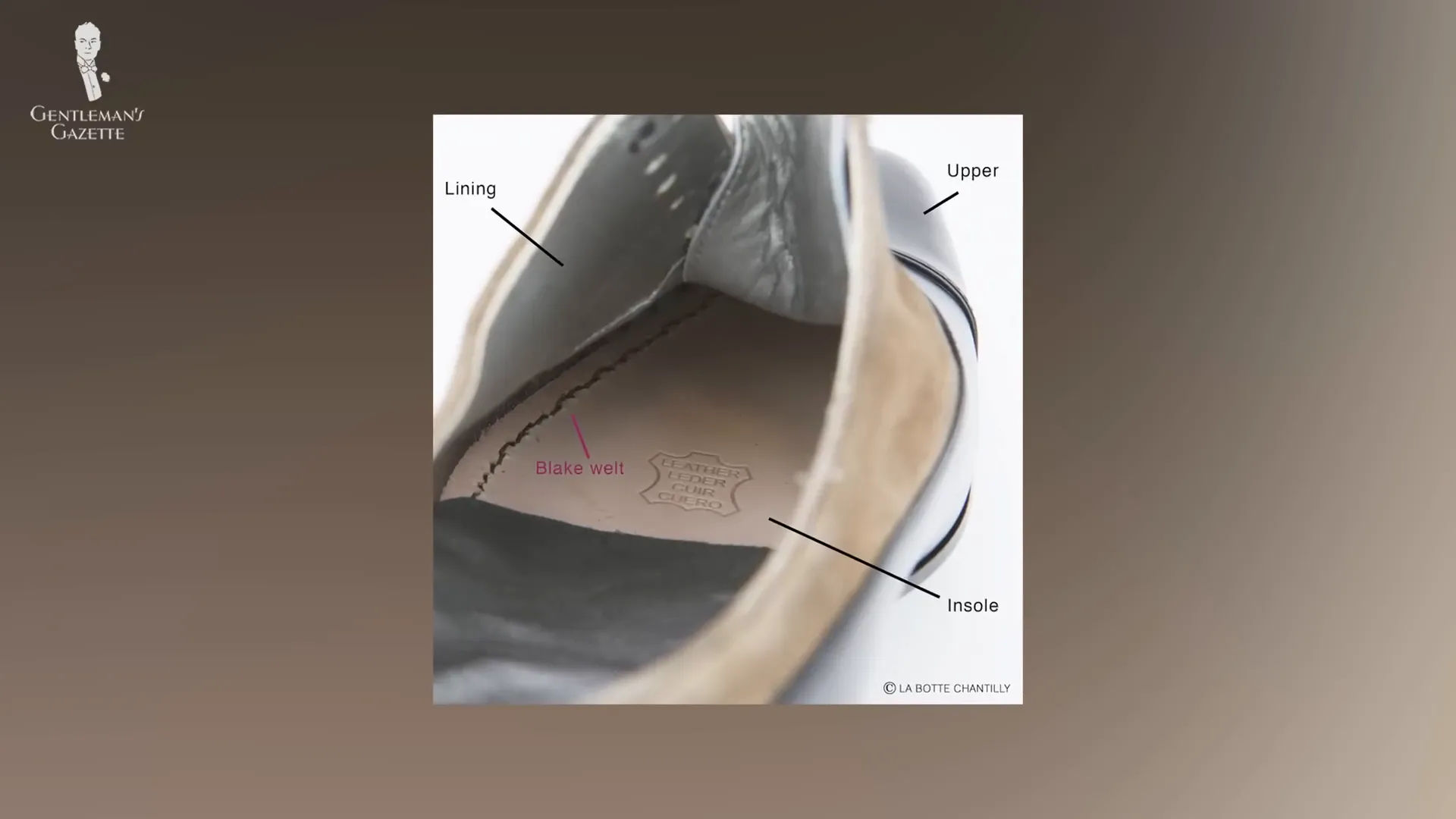
2. Blake Rapid Stitch
Similar to the Blake Stitch, the Blake Rapid method stitches the upper and sole to a midsole, creating a sleek appearance. The visible stitching inside the shoe serves as a giveaway for this construction method. This style combines elegance with practicality, making it a popular choice.
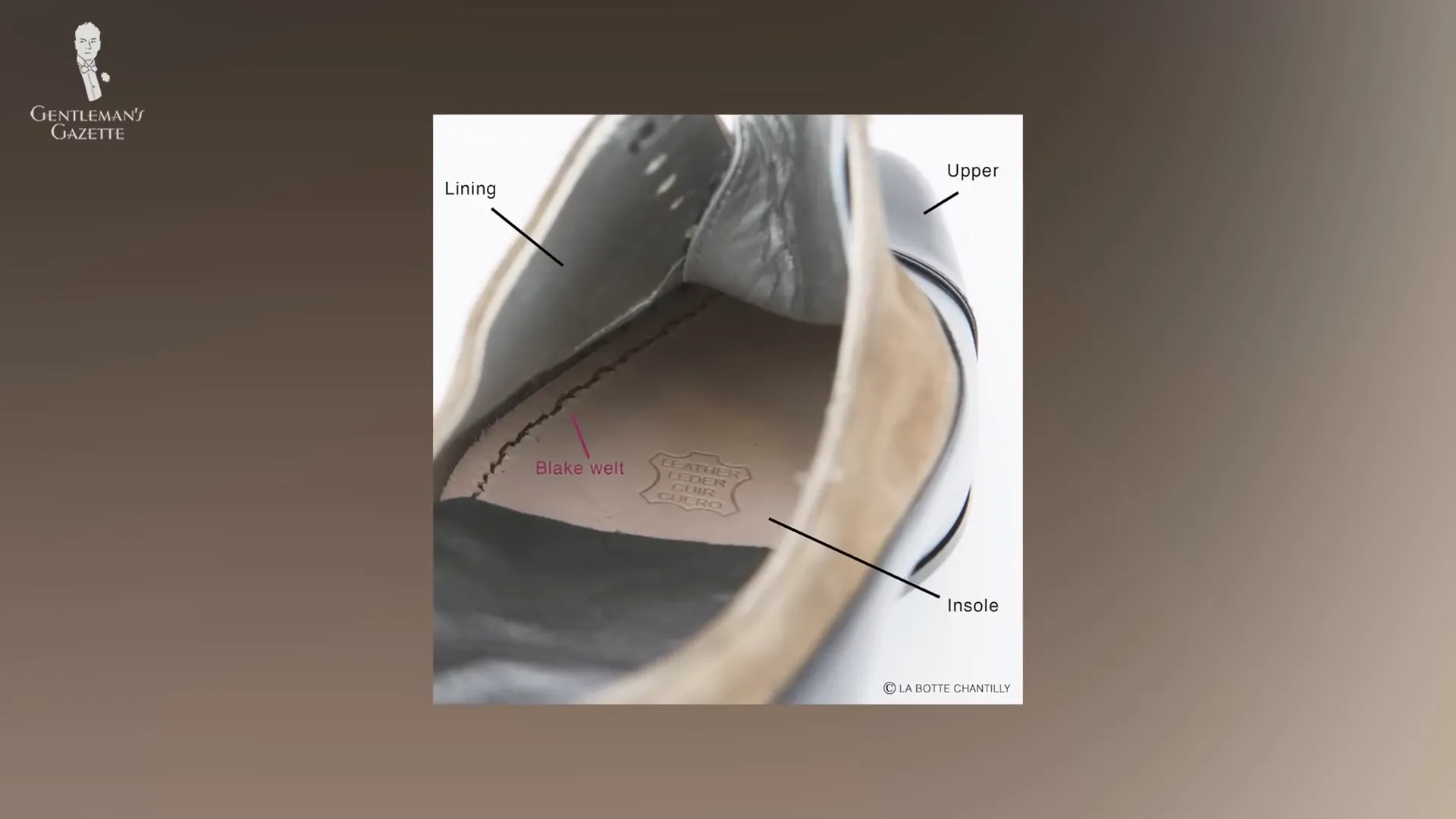
3. Hand Welting
Hand welting remains a hallmark of bespoke shoemaking, where every stitch is crafted with precision. This method takes significantly longer and commands a higher price, but the result is a shoe of unparalleled quality. The attention to detail in hand-welted shoes often leads to exquisite craftsmanship.
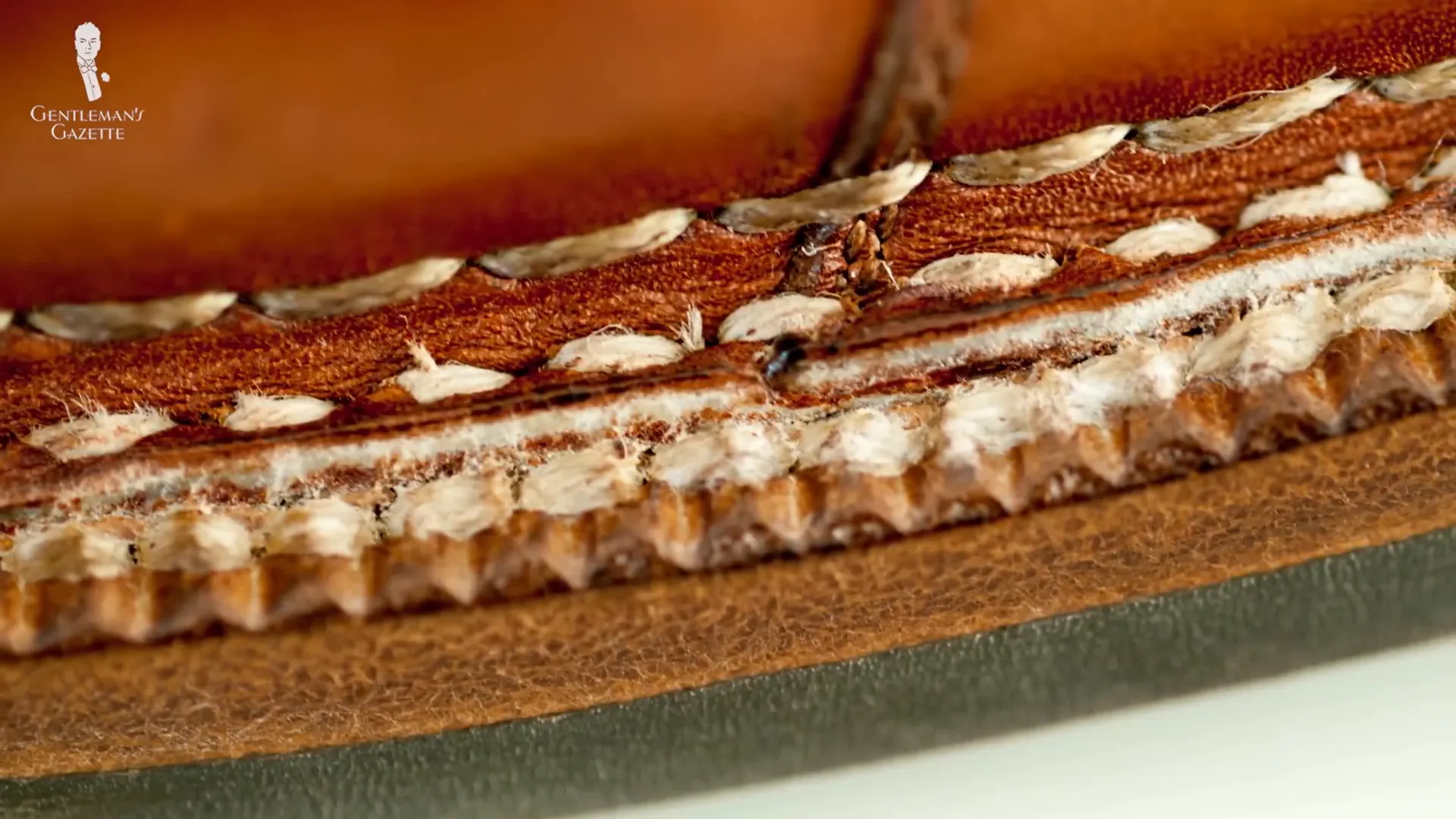
4. Norwegian/Norvegese/Storm Welting
The Norvegese or Norwegian welt is characterized by its prominent stitching around the shoe's perimeter. This method not only enhances waterproofing but also creates a robust appearance, making it ideal for colder climates. It's a welcome addition to any classic shoe collection, especially when paired with an elegant last shape.
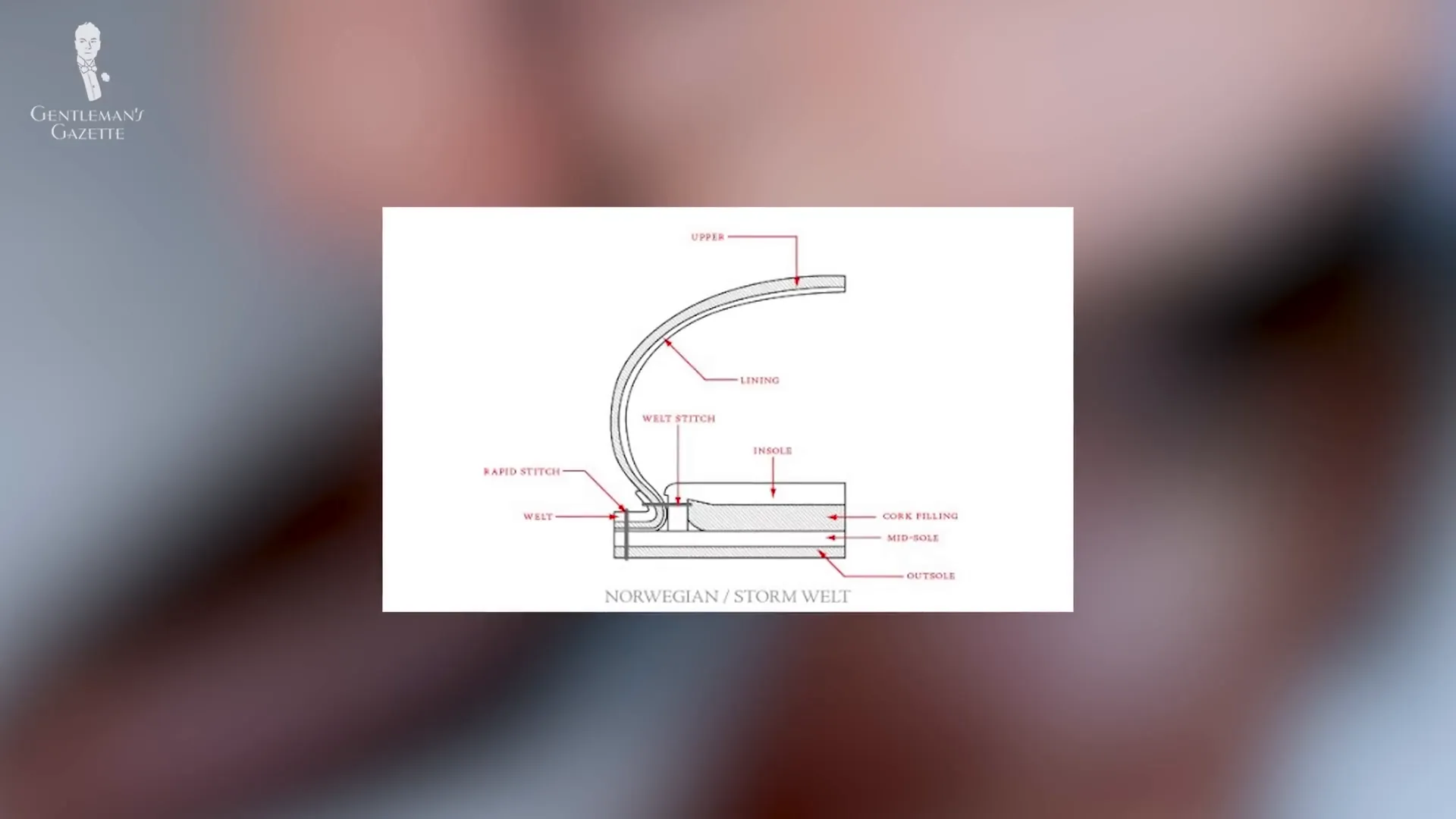
🛠️ 5. Cemented (Glued) Construction
Cemented construction, often referred to as glued construction, is the quickest and most cost-effective method of shoe assembly. In this process, the upper and the sole are simply adhered together using a strong adhesive. While this technique allows for rapid production, it often compromises durability and repairability.
One of the main drawbacks of cemented shoes is their inability to be resoled. The adhesive bond makes it challenging to separate the sole from the upper without causing damage. As a result, once the sole wears out, the entire shoe often must be replaced, leading to a less sustainable choice for consumers.
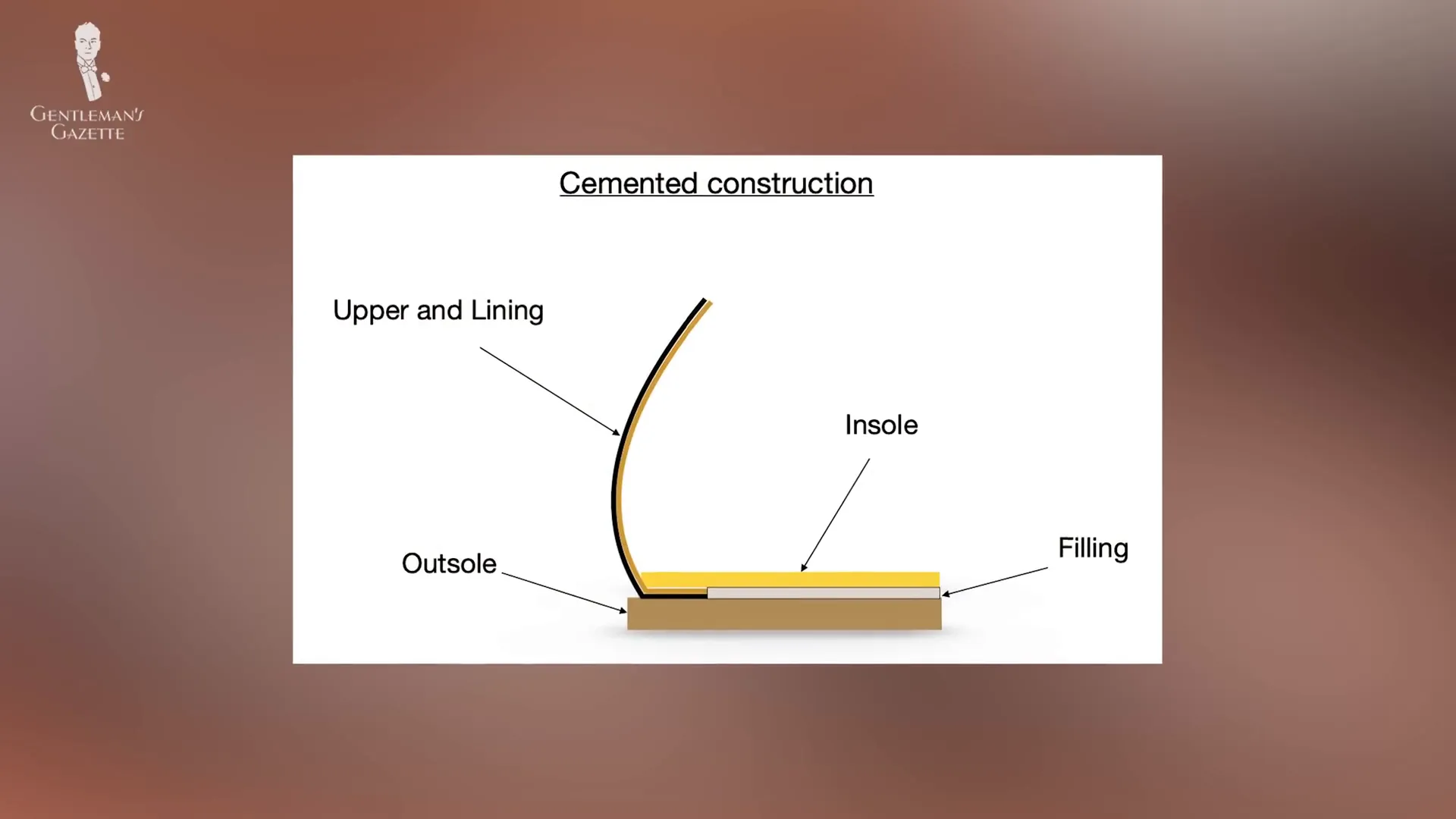
Advantages of Cemented Construction
- Lightweight: Cemented shoes tend to be lighter than their Goodyear welted counterparts, making them comfortable for immediate wear.
- Quick Break-in: With no need for extensive breaking in, these shoes can feel comfortable from the moment you put them on.
Disadvantages of Cemented Construction
- Lack of Durability: The adhesive bond is susceptible to wear and environmental factors, leading to a shorter lifespan.
- Difficult to Repair: If the sole wears out, the shoe often becomes unusable, leading to more waste.
🧑🤝🧑 Whom is Goodyear Welting For?
Goodyear welted shoes are ideal for individuals seeking durability and longevity in their footwear. If you value quality craftsmanship and plan to invest in shoes that will last for years, Goodyear welted options are a wise choice.
Here are a few types of individuals who would particularly benefit from Goodyear welted shoes:
- Frequent Wearers: If you wear dress shoes regularly, the ability to resole Goodyear welted shoes significantly extends their life.
- Style Enthusiasts: Those who appreciate classic styles and high-quality materials will find Goodyear welted shoes to be a great addition to their wardrobe.
- Environmentally Conscious Consumers: With their durability and repairability, Goodyear welted shoes are a more sustainable footwear option.

🚫 Whom is Goodyear Welting NOT For?
While Goodyear welted shoes offer numerous benefits, they may not be suitable for everyone. Here are some groups who might want to consider alternatives:
- Casual Wearers: If you only wear dress shoes occasionally, investing in Goodyear welted shoes might not be necessary.
- Budget-Conscious Shoppers: Those on a tight budget may find it challenging to justify the cost associated with high-quality Goodyear welting.
- Comfort Seekers: If you need shoes that are comfortable right out of the box, other construction methods may provide a better initial fit.
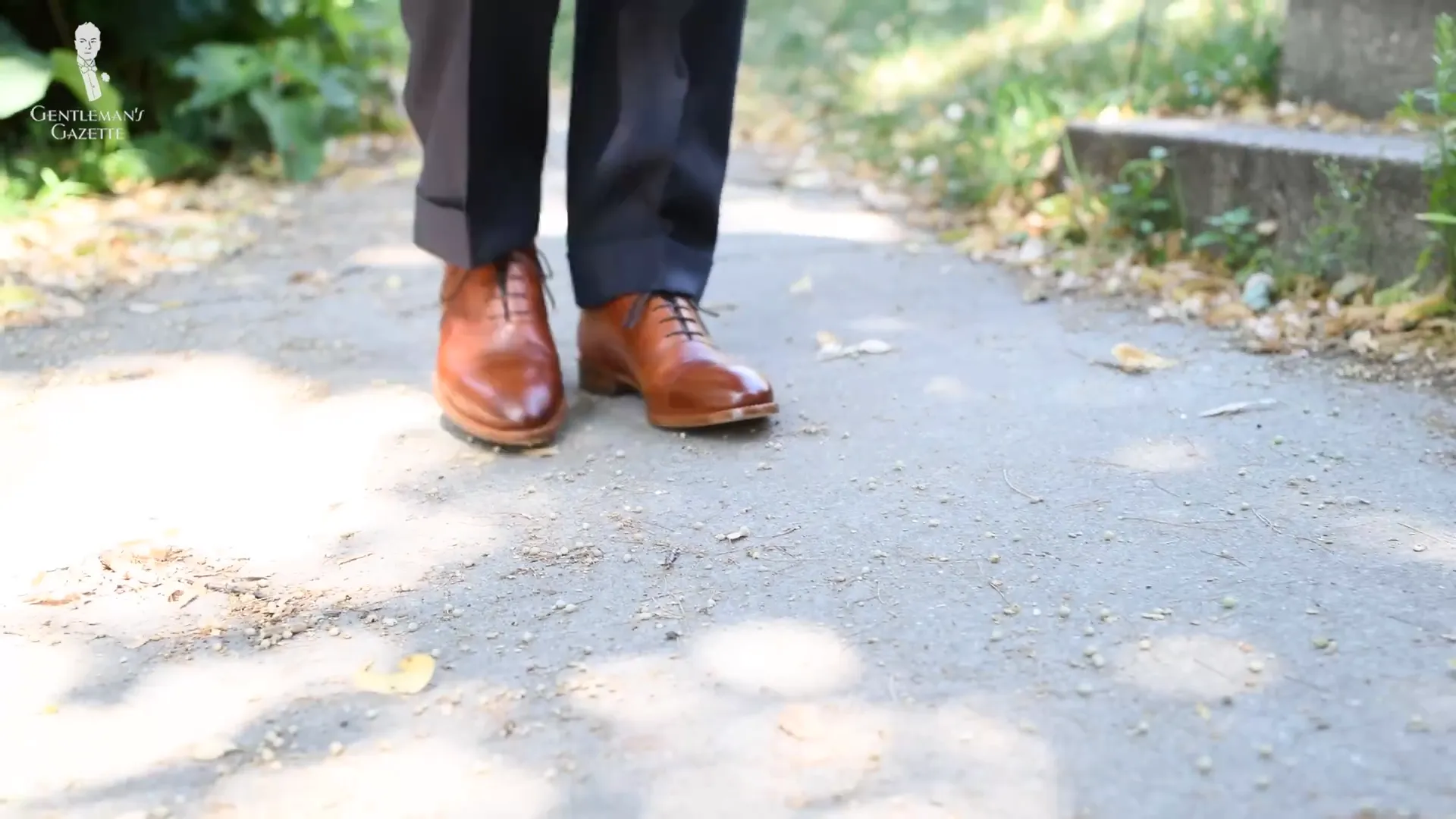
🔮 Myth or Magic?
When it comes to Goodyear welted shoes, the debate often revolves around whether the method is truly superior or merely a marketing gimmick. The reality lies somewhere in between.
While Goodyear welting does offer distinct advantages, it is crucial to remember that the overall quality of a shoe depends on various factors, including materials, craftsmanship, and design. Simply having a Goodyear welt does not guarantee a high-quality shoe.
Ultimately, the magic of Goodyear welting comes from its ability to combine durability, comfort, and classic style, making it a favored choice among discerning shoe aficionados.









